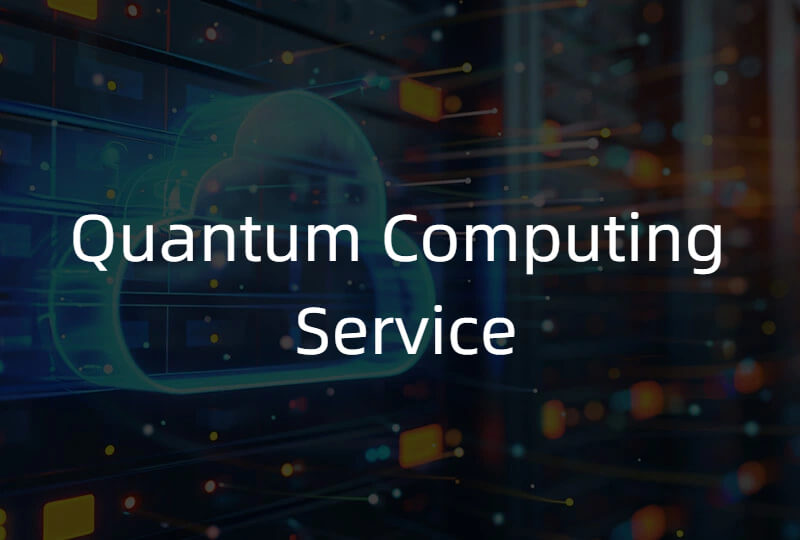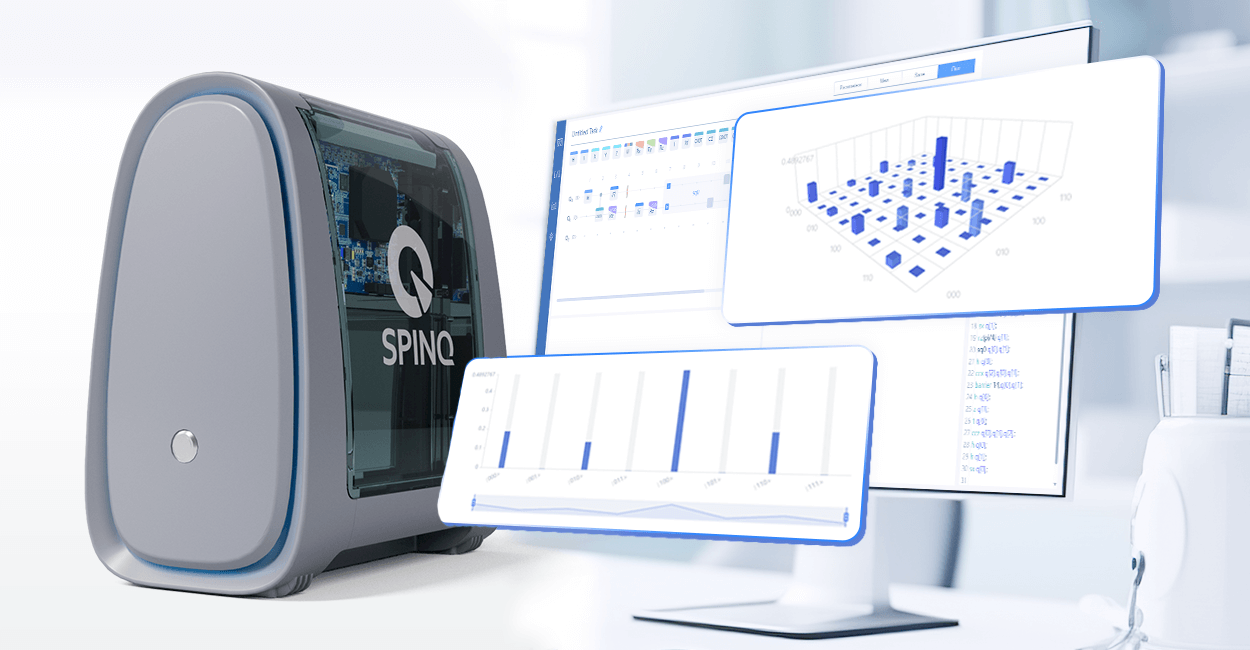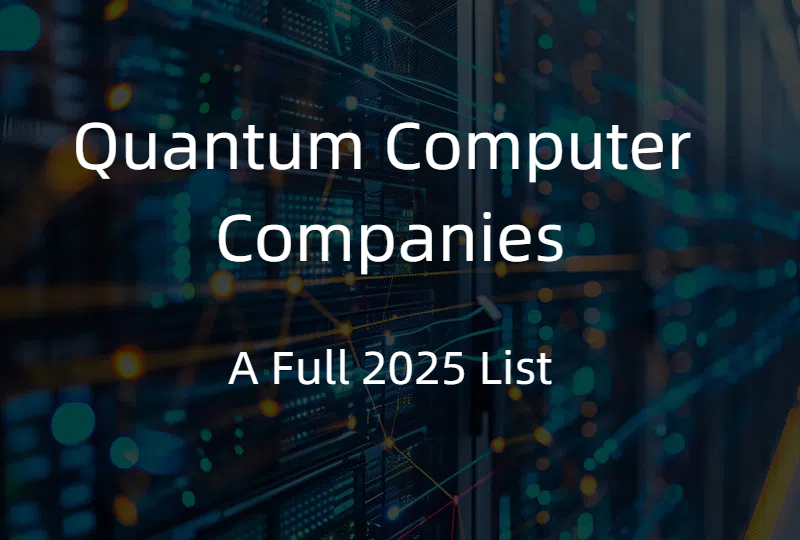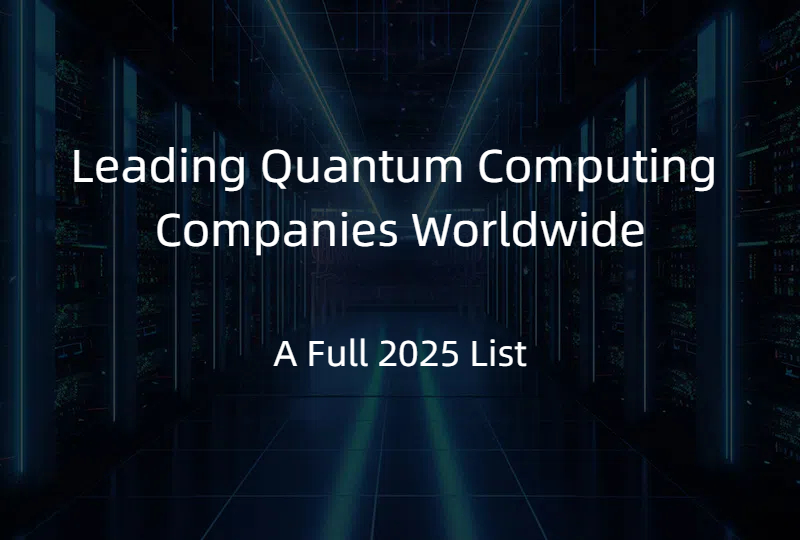Quantum Cloud Computing Services: IBM, AWS, Google & More
2025.06.19 · Blog quantum computing service
Quantum computing uses the strange properties of quantum mechanics (superposition and entanglement) to process information in ways impossible for ordinary computers. This new paradigm can potentially solve problems (like factoring large numbers or optimizing complex systems) far beyond the reach of today's classical machines.
However, building a quantum computer is extremely difficult and expensive – real devices require specialized hardware like cryogenic refrigerators and complex control system.
Quantum Computing as a Service (QCaaS) addresses this by providing cloud-based access to quantum processors, simulators, and development tools. In other words, quantum computing services let developers, researchers, and enterprises run quantum programs over the Internet without owning physical quantum hardware.
You can design and test algorithms on high-performance simulators or small real devices, then later scale up to larger quantum hardware – all via familiar interfaces like Python or web consoles. This approach eliminates major barriers: you don't need a multi-million-dollar quantum lab or a team of hardware engineers. Instead, you simply pay for what you use.
QCaaS also offers a variety of hardware back-ends (superconducting, trapped-ion, photonic, etc.), advanced software development kits, and managed execution. In short, quantum cloud services accelerate quantum research and education by making cutting-edge quantum systems accessible to everyone.

Key Benefits of Quantum Cloud Services
-
On-demand access to quantum hardware: Run your quantum circuits on real devices anywhere, anytime, without setup. Providers like IBM, Amazon, SpinQ, Microsoft, and others let you launch jobs on live quantum processors via a browser or SDK.
-
Powerful simulators included: Before using scarce quantum hardware, you can test and debug on high-fidelity simulators (classical supercomputers emulating qubits). For example, AWS Braket offers managed Jupyter notebooks and HPC-backed simulators so you can “test and validate your circuits” without owning a cluster.
-
Unified development tools: Cloud platforms provide SDKs and libraries (like IBM's Qiskit, Google's Cirq, Amazon's Braket SDK, SpinQ's SpinQit, D-Wave's Ocean, or PennyLane) that let you program quantum algorithms in Python or QASM. These tools often include tutorials and sample notebooks to help beginners.
-
Cost efficiency & scalability: You pay as you go for actual compute time and qubit usage (often via subscription or usage fees). This reduces total cost of ownership because there's no capital expense on specialized hardware. Enterprise customers can even reserve dedicated device time or get service-level agreements.
-
Diverse hardware choices: Many services aggregate multiple quantum backends. For instance, a single interface (like AWS Braket) can give access to different processor types (superconducting, ion-trap, analog annealers) from various vendors. This lets users pick the best hardware for their problem without vendor lock-in.
These benefits together make quantum experiments and prototyping far more accessible.
Leading Quantum Computing Cloud Platforms
IBM Quantum
IBM has been a pioneer in public quantum computing. Its IBM Quantum Platform (formerly IBM Quantum Experience) gives users access to a fleet of superconducting-qubit devices hosted at IBM research centers.
As of 2025 there are about a dozen IBM quantum processors online (ranging from 5 up to 127 qubits), all of which users can access remotely.
These machines include advanced systems like IBM's 1,121-qubit Condor processor – currently the world's largest quantum processor. Developers program IBM's devices using the Qiskit framework (a popular Python SDK), which compiles circuits into low-level OpenQASM code and runs them on real hardware.
IBM also provides an easy-to-use dashboard and free tier, so even students can run small experiments for educational or research purposes.
Amazon Braket
Amazon Web Services (AWS) offers Braket, a fully managed quantum computing service. Braket serves as a unified gateway to multiple quantum backends and simulators.
With Braket you can design quantum algorithms using Jupyter notebooks (the AWS console provides pre-configured environments) and then choose where to run them: on simulators or on real hardware from partners.
Braket currently supports gate-model devices (from IonQ, Rigetti, etc.) and an analog quantum simulator (from QuEra). In practice, this means an AWS user can write one piece of code and easily switch between, say, an IonQ trapped-ion system and a Rigetti superconducting chip.
Braket helps users overcome hardware bottlenecks: AWS handles all the underlying infrastructure, job queuing, and data collection. For example, Braket lets you reserve dedicated quantum hardware or use on-demand jobs with priority access. The service even offers a free tier – new users get 1 free hour of Braket simulator time per month, so you can start learning quantum computing at no cost.
In short, AWS Braket democratizes quantum computing on the AWS cloud, letting enterprises and researchers experiment without buying expensive kit.
Microsoft Azure Quantum
Microsoft's Azure Quantum is another major quantum cloud offering, built into the Azure ecosystem. Azure Quantum emphasizes hybrid workflows: users can combine classical Azure resources (VMs, GPUs, cloud AI) with quantum co-processors.
The platform partners with hardware companies – for example, it integrates IonQ's trapped-ion computers and Quantinuum's (Honeywell/Quantum Solutions) devices as backends.
Microsoft also provides an optimization toolset (like its Quantum Development Kit and libraries) for problems such as logistics and finance. Because Azure Quantum is fully managed within Azure, it appeals to enterprises already using Microsoft's cloud services.
SpinQ
SpinQ Cloud is a full-featured quantum computing cloud platform designed to provide seamless access to both real quantum hardware and high-performance simulators. Developed by SpinQ, the platform enables researchers, educators, and developers to run quantum programs and experiments through a unified, web-based interface—without the need for specialized infrastructure.
SpinQ Cloud supports a diverse range of quantum processors, including real quantum devices based on nuclear magnetic resonance (NMR) and superconducting technologies, with systems of 2, 3, 5, and 8 qubits currently available. The platform also includes a high-fidelity, full-amplitude quantum simulator supporting up to 24 qubits, allowing users to prototype, test, and optimize quantum circuits instantly.
Key capabilities include:
-
Access to Real Quantum Hardware: Run jobs on multiple real quantum systems with varying architectures and qubit counts.
-
High-Performance Simulation: Utilize a 24-qubit full-amplitude simulator with minimal latency and no queuing.
-
Visual Circuit Editor: Build and modify quantum circuits using a drag-and-drop interface, or edit directly in OpenQASM for precision control.
-
Integrated Quantum Programming Environment: A built-in Jupyter Notebook environment supports Python development and collaborative workflows.
-
Task Management Dashboard: Monitor job status, manage files, configure hardware platforms, and export results—all from a centralized UI.
-
Algorithm Library with Real-World Scenarios: Pre-built visual modules demonstrate how quantum algorithms solve optimization, machine learning, and simulation problems.
SpinQ Cloud also features SpinQit, a proprietary Python-based quantum SDK. SpinQit enables users to build, simulate, and execute quantum algorithms across both hardware and simulation backends, offering a consistent interface for scalable experimentation and development.

D-Wave Leap
D-Wave's Leap platform offers a different flavor: quantum annealing. D-Wave hardware uses thousands of qubits in an annealing architecture (not gate circuits) specialized for optimization problems (like route planning or portfolio allocation).
Developers can access D-Wave's systems via Leap (also over AWS or their own cloud); it provides an Ocean SDK for building problems. Leap has been used for logistics and scheduling solutions in real-world projects.
Google Quantum AI
Google Quantum AI provides cloud access to Google's superconducting quantum processors (the same technology behind Google's Sycamore and the newer Willow chip). Google users program these machines via the Cirq framework (an open-source Python library) and can schedule jobs on Google's quantum hardware through Google Cloud.
Google's focus has been on pushing qubit performance (they demonstrate high-fidelity operations) and researching error correction. Google Quantum AI also often includes statevector simulators and its TensorFlow Quantum SDK for hybrid quantum-classical machine learning experiments.
Other notable QCaaS offerings include Xanadu Cloud (photonics-based, with PennyLane integration) and smaller providers like IonQ (which also offers its own cloud service). In summary, there's now a vibrant ecosystem of quantum cloud services – from IBM and Amazon to startups – each giving users different hardware and tools.
Applications of Quantum Computing Services
Quantum cloud services are already finding use in many fields.
For example, pharmaceutical researchers use quantum simulators to model molecular energy states and speed up drug discovery.
Financial firms experiment with quantum algorithms for portfolio optimization and risk modeling, handling large datasets in novel ways.
Industries like logistics and manufacturing use quantum solvers to tackle complex scheduling and supply-chain problems.
Even cybersecurity teams test quantum-resistant encryption by running code on cloud quantum platforms. Educational institutions also leverage these services: students and educators can run real quantum experiments online, “democratizing access to real quantum systems” for learning.
Featured Content






